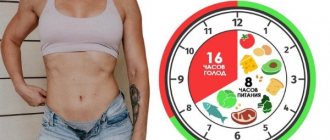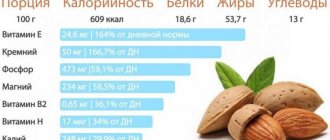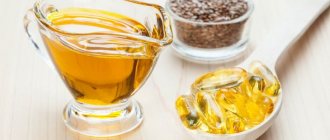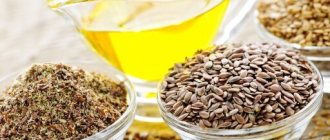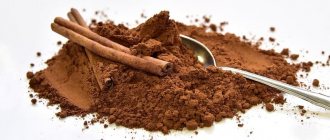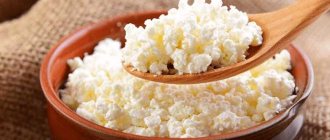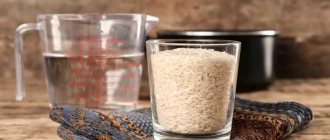Such problems often happen when you urgently need to cook something new for lunch according to a strict recipe, but there are no scales, or the battery is “dead.” In such a situation, you should not get lost, since the kitchen has various cutlery and objects with the help of which the problem of determining the weight or volume of various products can always be solved. For example, housewives often use a glass or a tablespoon and a teaspoon for this. It is only important to know how much of what they hold. And special tables of measures and weights will help with this, which you need to focus on. You won't remember much by heart. Most often, a tablespoon is used, so let’s talk about it, which acts as a kind of “scale.”
Spoon sizes and capacity
The first spoons appeared in 3 thousand BC. At first they were made from shells and bones of a characteristic shape. Then they switched to wood production. Later, the excellent qualities of baked clay were discovered (some craftsmen still make clay spoons). Over time, people learned to melt metals into different forms. In Rus', the first silver product appeared in 988 AD. – it was presented to Vladimir Krasno Solnyshko. There is now a culture of serving cutlery. 5-6 different spoons are placed on both sides of the plate, depending on the nature of the dishes that will be consumed.
You can familiarize yourself with common and rare spoons in the table below:
| Name | Description | What is it used for? | Capacity in g (ml) |
| Dining room | Oval, oblong, depth varies | For soups, cereals and purees | 18 |
| Teahouse | A smaller copy of the dining room, but it can also be round rather than oval | For tea and coffee | 5 |
| Dessert | Depends on the dessert itself. For example, if for citrus fruits it is oval with a small scoop | For mousse, pudding, berries with cream, fruits in their own juice or syrup | 10 |
| For ice cream | It has the shape of a shovel, the edges are curved. Served only with dessert, not placed on the table | For ice cream, pudding and other frozen treats | Not precisely defined (10-17). The entire volume is not filled with dessert so that it melts a little and does not harm the teeth |
| For cold drinks | The shape resembles a teapot, only more elongated, and also with a long handle. | For drinks with whole or pieces of fruit and berries at the bottom | 5-7 |
| Coffee shop | The shape is identical to a teaspoon, but miniature | For coffee with grounds | 3-5 |
In addition to individual spoons, table settings also include those intended for general use:
| Name | Description | What is it used for? | Capacity in g (ml) |
| Soup | Classic ladle | For a set of soups or drinks | 100-250 depending on size |
| For second courses | It resembles the shape of a regular tablespoon, but is 2 times larger. It also has a special handle to make it more convenient to transfer the accumulated mass to an individual plate | For a set of hot main courses, mainly without broth | 35 |
| Sauce | Reminiscent of a ladle, but reduced in size, and with a characteristic spout on one side | To add sour cream and various sauces to the main dish | 15-18 |
| For caviar | It has the shape of a spatula, but is identical in volume to a dessert spoon | For a set of caviar, both fish and eggplant or squash | 10 |
| Sugar | Shaped teaspoon | Served to the table if the sugar is not refined. When sugar is lumpy, use special tongs instead of a spoon | 5 |
Spoons are treated with special treatment everywhere. As an example, we can recall several traditions:
- In Rus', silver spoons were given when the baby's first teeth erupted. This was usually done by godparents, but sometimes by grandparents or other relatives;
- In Rus', painted wooden spoons were given to newlyweds as wedding gifts;
- in the 18th century, musical instruments in the form of spoons appeared in Rus';
- In England, there was a tradition of giving a spoon to competition participants who took last place as a consolation prize.
Is there really any harm from muesli and what is it?
Like any product, muesli can harm the athlete’s body. Let's look at typical examples of such situations:
- Consumption of cereal by athletes during exacerbation of gastrointestinal diseases. Muesli has a coarse structure, is not heat-treated and requires significant effort from the digestive system to digest. They provoke a deterioration in health, prolonging treatment. To avoid harm from corn flakes, they are excluded from the diet during exacerbation of chronic diseases of the gastrointestinal tract.
- The use of mixtures that contain undesirable components. For each athlete their list is individual. For example, if you are gluten intolerant, you cannot use grain mixtures. Raspberries and citrus fruits are contraindicated for athletes with allergies. Honey and sweet fruits should be excluded from the diet of diabetics, etc.
- Incorrect selection of caloric content of the mixture for the training schedule. If there is a significant discrepancy between calorie content and energy expenditure, an undesirable increase in fat mass will occur (if it is exceeded). If the nutritional value of the mixture is reduced due to increased loads, this will lead to exhaustion of the body and deterioration in athletic performance.
- Excessive consumption of muesli. Standard mixtures do not contain vitamin C. Long-term use of such flakes leads to a decrease in immunity. The right approach to nutrition: adding freshly squeezed juices rich in vitamin C to muesli and eating cereal once a day.
Determining the required number of spoons by weight of the product
How many grams are in a tablespoon, if you know reliably, you can measure the mass of a bulk or liquid product. For example, when according to the recipe you need to add 60 ml of milk to the dough, then pour 4 tbsp. l. If you need to measure 20 ml of milk, use 4 tsp. Bulk products or liquids are measured with spoons or glasses. You can use precise measuring cups with marks and an indication of the amount of product. The downside of a measuring cup is that it only applies quantities to popular items such as sugar, salt or water.
If you need to measure gelatin or protein, then a measuring cup will not help. Root vegetables, vegetables or fruits are measured individually. Only the average weight of these products can be calculated. They all vary in shape and weight, so you will still need to use a scale to measure accurately. For example, the weight of 1 potato varies from 40 to 140 g. The average weight is 90 g. In recipes, the number of vegetables or fruits is often written individually. Average products in size and weight are taken as a basis.
If only large items are in stock, the quantity is reduced according to the approximate weight. Instead of 4 medium potatoes, take 3 large ones. If there are small vegetables in stock, the quantity increases.
Cooking at home
If possible, it is always better to make this product yourself rather than buy it at the supermarket without even looking at the composition of the muesli bar. This way you will know for sure that only natural and healthy ingredients are included in it. The most commonly used are oatmeal, whole grains, nuts, honey, seeds (sesame, pumpkin, sunflower), and homemade dried fruits. Instead of honey, you can add agave syrup or stevia extract, and also use banana pulp, apples, and dates.
Such products are prepared simply and quickly. You can also involve children in this activity; they will be happy to mix the mixture and cut the bars.
With orange for tone
Ingredients:
- 200 g oatmeal;
- 100 g dried fruits;
- 100 g nuts;
- orange zest - to taste;
- 4 tbsp. l. orange juice;
- 60 g honey;
- 2 tsp. vegetable oil.
You can take any oil, but it is better to give preference to the first cold-pressed product, regardless of the source raw material. Sunflower, flaxseed, sesame, and pumpkin are suitable.
Sequencing:
- Chop the nuts with a knife.
- Remove the zest from the orange and squeeze out the juice.
- Divide the dried fruits into parts: grind one half with honey (30 g) to a paste, cut the second into slices.
- Combine flakes, nuts, zest, dried fruits. Add the remaining honey, juice and oil. Stir until all components are evenly distributed throughout the mixture.
- Line a baking tray with baking paper and place the mixture on it. Roll out into an even layer.
- Place in the oven and bake for about a third of an hour at 180 degrees. Cut the still hot dessert into rectangles or squares. Serve cooled. This delicacy will definitely please little ones with a sweet tooth, and adults will not remain indifferent to it.
How many grams of sugar, salt and other bulk products are in 1 tablespoon?
How many grams are in a tablespoon of fine and coarse salt, sugar, and other products popular in the kitchen can be found in the table:
| Name | In Art. l. without slide (in g) | In full article l. |
| Wheat, oat and regular flour | 20 | 30 |
| Granulated sugar | 20 | 25 |
| Powdered sugar | 23 | 28 |
| Fine salt | 22 | 28 |
| Lump salt | 25 | 30 |
| Tea and household soda | 22 | 28 |
| Yeast | 8 | 11 |
| Cocoa powder | 20 | 25 |
| Ground coffee, powdered | 15 | 20 |
| Cinnamon | 15 | 25 |
| Crystalline citric acid | 12 | 16 |
| Rice | 15 | 18 |
| Gelatin granules | 10 | 15 |
| Chopped fresh herbs (dill, bay leaf) | 10 | 15 |
| Dry chopped greens | 5 | 10 |
| Allspice or bitter crushed pepper | 12 | 15 |
| Ground cloves | 12 | 15 |
| Cloves in balls | 10 | 13 |
| Poppy | 12 | 15 |
| Oatmeal | 15 | 20 |
Measuring bulk products with spoons without heaping is dangerous. The presence of a slide is viewed differently by all housewives. Therefore, it is better to use full containers to avoid taste problems. In most recipes, where a spoon is indicated instead of the mass of the product, they mean a full container.
How many grams of bulk products are in 1 teaspoon?
Traditionally, 1 tbsp. l. = 3 tsp Therefore, guided by the product measurement table in Art. l., you can calculate the amount for tea. When filling containers with salt, sugar or flour, do not compact the food. Full compaction will still not work. But the spoons will always get different amounts, which will negatively affect the taste of the dish. Also, when a recipe calls for a large amount of product, teaspoons are used for accurate measurement. They collect sugar, starch or flour.
Then they sink to the very bottom of another container, after which they spill out. Then no voids are formed inside, and the bulk product is distributed evenly. In addition to compacting the product, it cannot be loosened. Otherwise, voids will definitely form. For example, when flour needs to be sifted before use, the quantity is first measured and then passed through a sieve. When making measurements, take into account the country of production. Russian and Asian classic teaspoons will mix 5 g.
But if the product is purchased in the USA, then the weight is reduced to 4.93 g, in the UK - to 3.55 g. Teaspoons are rarely used in recipes. They are usually used when a very small amount of product is required.
Harm and contraindications
It is not recommended to consume this “porridge” every day, since an excessive amount of fiber in the body can cause bloating and pain. You should not buy the product by weight, since in this form they can sell low-quality goods containing dangerous microorganisms.
Natural muesli without additives is not harmful to the human body. But various components included in their composition can cause damage to health. Manufacturers often add tropical fruits to their products, which are pre-treated with specialized substances. This product is not recommended for use by people with stomach diseases.
Manufacturers also add synthesized chemical components to muesli to enhance the taste. They can kill beneficial substances contained in cereals. The composition also contains palm oil, which is harmful to people suffering from cardiovascular diseases. The presence of any artificial additives in the product should be a reason to refuse the purchase.
It is forbidden to include muesli in your diet if you have the following health problems:
- celiac disease;
- allergic reaction;
- gastritis and ulcer.
Baked muesli is contraindicated for liver disease, as it is difficult to digest due to its high fat content. Eating this dish may cause an aggravation. Muesli with dried fruits contains a lot of sugar, so they are contraindicated for people with diabetes.
Despite the fact that the product can be included in the diet of women who are breastfeeding, before use it is worth paying special attention to the composition. It should not contain artificial substances and the following additives:
- honey;
- dried fruits;
- nuts
All of the above ingredients are strong allergens for a small child, and raisins can impair milk production in the mother.
How many grams of bulk products are in 1 dessert spoon?
How many grams in a tablespoon of salt you need to know to determine the volume of dessert. It makes up 2/3 of the weight. But this statement is true if a classic spoon is used.
Dessert boxes differ in parameters:
- form;
- handle length;
- material of manufacture;
- depth;
- the presence of a recess (spout) on one of the sides.
Since they all differ in weight and volume, housewives risk ruining the dish with incorrect measurements.
In Russia, 3 types of dessert spoons are popular:
- classic. The volume of this product is 10 ml or g. They are used mainly for consuming various desserts, such as yoghurts, jellies or fruits with whipped cream;
- coffee. They gained popularity with the opening of cafeterias in large cities of Russia. They are served at the table if you order coffee with ice cream - a relatively new European delicacy. The volume of such a spoon is 2.45 ml or g;
- bar This name has many meanings. If dessert spoons are considered, then they mean a small scoop with a strong depression (reminiscent of a hemisphere). Used for drinking multi-layer drinks with fruit. Spoon volume – 15-12 ml or g.
There are many different other shared and individual spoons. To use the product as a measuring cup, it is recommended to first take accurate measurements. After measuring the weight, they can be used in the kitchen.
Article on the topic: A serving of granola
Healthy eating helps a person not only stop gaining pounds, but also lose excess weight. But, having switched to proper nutrition, many are faced with the fact that all parameters remain the same or, worse, increase! The issue with granola is especially acute.
A person, having once discovered granola and finally realized that proper nutrition can also be tasty, buys himself a package, comes to his home and immediately eats half of it to celebrate. After a couple of weeks, it suddenly (!) turns out that instead of the expected weight loss/maintenance, he has gained a couple of extra pounds. Of course, he blames granola for all his troubles. You see, she “puts on weight.”
If he or she really tried to figure out why this happened, they would quickly come to the conclusion that it was all a matter of the size of the portions eaten. After all, in addition to what we eat, it is no less important how much of it we put on our plate.
As you know, fear has large eyes (so something terrible seems larger/more complex to us than it actually is), while hunger has eyes that are apparently small, since it always seems to us that there is less on our plate than we need. So it turns out that even if you eat more than the norm of a healthy product, you will get the opposite result to what you want.
Summary table of bulk products
You can resort to a measuring table if you need to take the right amount of product, but it is not possible to use standard scales for this:
| Bulk product | Standard mug (in g) | Glass with thick walls (in g) | Art. l. | Ch.l. | Des. l. |
| Granulated sugar | 200 | 160 | 25 | 8 | 16 |
| Lump salt | 360 | 280 | 30 | 10 | 20 |
| Fine salt | 380 | 310 | 28 | 9 | 19 |
| Household soda | 200 | 160 | 29 | 10 | 19 |
| Dry cream | 120 | 95 | 28 | 12 | 20 |
| Medium grain rice | 245 | 175 | 30 | 10 | 20 |
| Corn grits | 190 | 150 | 21 | 7 | 14 |
| Barley grits | 190 | 155 | 21 | 7 | 14 |
| Pearl barley | 220 | 170 | 24 | 8 | 16 |
| Yeast powder | 110 | 90 | 13 | 5 | 9 |
| Gelatin granules | 120 | 95 | 15 | 5 | 10 |
| Starch powder | 150 | 115 | 30 | 10 | 20 |
| Oatmeal flakes | 90 | 65 | 12 | 4 | 8 |
| Buckwheat | 200 | 160 | 25 | 7 | 14 |
| Millet | 220 | 180 | 25 | 8 | 16 |
| Citric acid granules | 300 | 250 | 20 | 7 | 12 |
| Powdered sugar | 190 | 140 | 24 | 8 | 16 |
| Wheat flour | 160 | 130 | 30 | 10 | 20 |
| Breadcrumbs | 125 | 100 | 16 | 5 | 11 |
The most popular methods for measuring recipe weights are tablespoons and thin-walled glasses. You can also use special cups with risks. The indicated measures will be correct only if the spoons and glasses are filled full. The products must not be shaken or otherwise attempted to compact them. For example, the table indicates that 160 g of starch fits in a thin-walled glass. But if you compact it, the weight increases to 200-210 g.
It is also impossible to sift products, as this will create voids. For example, if you pass flour through a sieve, its weight decreases from 160 g to 120 g.
How many ml and drops of liquid, viscous products are in a tablespoon?
In Russia, several types of tablespoons are used, the volume of which ranges from 12-18 ml. The recipes use standard cutlery measuring 3x4 cm.
The table lists the liquids, as well as their volumes and drops in tablespoons:
| Liquid | Ml in a spoon | Drops (pcs.) |
| Water | 18 | 360 |
| Milk | 15 | 300 |
| Table vinegar | 15 | 300 |
| Vegetable oil | 16 | 320 |
| Syrup | 18 | 360 |
| Tomato paste | 15 | 300 |
| Sour cream | 25 | 500 |
| Condensed milk | 30 | 600 |
| Melted margarine | 15 | 300 |
| Melted butter | 25 | 500 |
| Honey | 21 | 420 |
| Mayonnaise | 25 | 500 |
| Kefir | 18 | 360 |
One drop of liquid = approximately 0.05 ml (exceptions include viscous liquids, where the volume of the drops depends on temperature). This is how you count the number of drops of water, wine or vinegar in a tablespoon. l. You can also measure ml if you use the inverse equation. How many grams in a tablespoon of salt or flour can be calculated, but you need to take into account what kind of cutlery will be used. In Russia, classic spoons hold a volume of 18 ml.
But in various other countries this figure varies:
- USA, Canada, New Zealand - 0.5 ounces, or 14.787 ml;
- Australia – 19-20;
- Great Britain - 13.8.
The easiest way to measure the volume of a spoon, which will later be used for prescriptions, is to use the plastic containers that come with the medicines. They indicate drops and ml accurately, so the measurements will be reliable.
How many ml and drops of liquid, viscous products are in a teaspoon?
Volume 1 tsp. is 1/3 of the dining room. Using the table, calculate ml. The difference is characterized by different densities of liquids.
They are divided into 3 categories:
- true. They are characterized by their chemical state and composition. Examples: water, vinegar, wine;
- dense. They are characterized by low viscosity at standard room temperature. If they are heated, they acquire the properties of true liquids. Examples: syrup, honey, milk;
- thick mixtures. On the one hand, they are liquid, but on the other hand, they can be heaped into a spoon. Examples: frozen honey, tomato paste, condensed milk.
The spoons themselves also differ. Each kitchen often has several tea utensils, differing in shape, design and volume. Chefs are advised to allocate one spoon for preparing recipes, measure its volume in order to use it later.
Summary table of liquid, viscous products
It is more convenient to measure liquid products with spoons, since they cannot be heaped up.
You can see the exact values in the measurement table:
| Product | Standard mug (in ml) | Faceted glass (in ml) | Tablespoon | Tea spoon | Dessert spoon |
| Milk | 250 | 200 | 15 | 5 | 10 |
| Mayonnaise | 325 | 260 | 25 | 8 | 16 |
| Cream | 250 | 200 | 15 | 5 | 10 |
| Soy and some other sauces | 325 | 230 | 21 | 7 | 14 |
| Sour cream | 260 | 210 | 25 | 10 | 18 |
| Yogurt | 325 | 250 | 25 | 10 | 18 |
| Condensed milk | 260 | 210 | 30 | 12 | 21 |
| Kefir | 325 | 250 | 18 | 6 | 12 |
| Sunflower oil | 260 | 210 | 17 | 5 | 11 |
| Jam (jam) | 325 | 270 | 35 | 15 | 23 |
| Melted margarine | 230 | 180 | 15 | 5 | 13 |
| Melted butter | 230 | 180 | 25 | 8 | 17 |
| Water | 250 | 200 | 18 | 6 | 12 |
| Vinegar | 250 | 200 | 18 | 6 | 12 |
| Tomato paste | 250 | 200 | 30 | 10 | 20 |
| Honey | 250 | 200 | 21 | 7 | 14 |
Secrets and methods of weighing without scales
Housewives do not always have kitchen scales in their arsenal. However, there are plenty of improvised means, such as cutlery, glasses or mugs. There are several tricks that will help you measure out the right amount of food according to recipes.
Pasta
Pasta, like cereals, varies in shape and weight. Therefore, it will not be possible to measure the exact amount without a scale.
But you can do this with minimal error:
- in a faceted glass 190 g;
- in a glass with thin walls 230 g;
- in a tablespoon 33 g.
The convenience is that the pasta is approximately the same in weight, regardless of shape. But the mass can vary greatly after cooking. Boiled maroons absorb a lot of liquid, which affects the weight.
Vegetables
Every cook peels and cuts vegetables differently, so they can't be weighed out with glasses or spoons.
Based on average weight (g):
- potatoes – 80;
- onion – 70;
- carrots – 75;
- cucumber – 100;
- tomato – 85;
- beets – 60;
- bell pepper – 50;
- hot pepper – 30;
- Dungan pepper – 40;
- eggplant – 120.
Eggs
The weight of an average egg depends on the bird (g):
- ostrich – 900;
- turkey – 80;
- chicken – 60;
- duck – 70;
- goose – 200;
- quail – 10.
The yolk content of an egg is 33%, 12% is the shell, and 55% is the white.
Cottage cheese
Cottage cheese is added mainly to baked goods, so accuracy is the key to success.
To measure the amount of cottage cheese, you can use the following methods:
- in a glass with thin walls, filled to the top, fit 250 g;
- in a faceted glass – 200 g;
- in a heaped spoon – 16 g.
To determine the exact weight, it is recommended to first knead the cottage cheese so that there are fewer voids. And you should put it into the container, lightly tamping it down.
Nuts and seeds
How many grams of salt are in a tablespoon you need to know to roughly determine the weight of nuts and seeds in ratio.
Depending on the type, the following values are obtained (g/tbsp with a slide):
- peanuts – 23-25;
- almonds – 27-31;
- hazelnuts – 27-30;
- walnut – 28-33;
- pine nuts – 9-10;
- sunflower seeds (dried and peeled) – 23-25;
- pumpkin seeds (dried and peeled) – 18-20.
If you thoroughly grind the nuts or seeds, then in 1 tbsp. l. you will get about 28-30 g of mixture. Culinary trick: if you plan to get a pronounced taste of nuts when baking, they need to be ground and then dried. Then the oil evaporates along with its characteristic taste.
Berries
Berries are also actively used in the kitchen. They are useful not only for baking, but also for preparing various cocktails and drinks.
Weight of different berries in 1 spoon (g):
- cherry, spandex, lingonberry, dried rosehip – 20;
- strawberries, black currants, cranberries – 25;
- raspberries, currants, blackberries, cherries – 30;
- gooseberries, fresh blueberries, blueberries – 35;
- blueberries after drying - 15.
Fruits
Like vegetables, fruits are valued individually, taking into account the average weight (g):
- apricots – 40;
- orange – 135;
- pear – 130;
- 1 strawberry – 8;
- lemon – 60;
- peach – 85;
- plum – 30;
- apple – 90.
Spices
Since a lot of spices are not added to dishes, it is better to use teaspoons (g):
- pepper (black and allspice) – 5;
- peppercorns – 6;
- powdered mustard and cloves – 3;
- cinnamon – 8;
- whole cloves – 4.
If you use whole spices and food additives, you can use medium weight.
1 g contains (pcs.):
- cloves – 12;
- bay leaf – 7;
- hot pepper – 30;
- allspice – 15.
Composition and calorie content
Muesli contains the following beneficial substances:
- complex of minerals (calcium, phosphorus, iron, potassium, zinc, magnesium, manganese, selenium);
- a set of vitamins (B, A, C, E, D, K);
- fatty acid;
- alimentary fiber;
- cellulose.
Ratio of BJU per 100 grams of product:
- fats - 5.5 g;
- proteins - 9.1 g;
- carbohydrates - 72.9 g.
As for the calorie content of muesli, it varies depending on the type of product and is:
| Product name | Number of calories in 100 grams |
| Muesli with dried fruits | 350 kcal |
| Chocolate | 400 kcal |
| Muesli with seeds | 363 kcal |
| Baked | 460 kcal |
| Muesli with nuts | 425 kcal |
Note to the hostess
To measure a small amount of bulk product, you need to pour a full teaspoon. Next, it is poured onto the board and divided into 2-3-4 equal shares. For example, a tablespoon contains 7 g of salt. To get 1 g, you need to divide the contents into 7 parts. One of them will make up the required amount. It's difficult to remember all the weights and measures. Therefore, you can print out a small reminder, laminate it, and keep it handy near your kitchen table. When planning to prepare dishes of foreign national cuisine, recipes are searched for on foreign websites and blogs.
How many grams are in a tablespoon of salt can be easily calculated, as shown in the article.
This is where chefs encounter the abbreviation “oz.” This ounce is the standard measurement of weight in many (mostly English-speaking) countries. 1 ounce = 28.35 g, and 1 kg contains 35 ounces. Also, sometimes on foreign websites and blogs with recipes there is another abbreviation: “fl oz”. This is a unit of measurement for liquids, as in Russia g - for bulk and whole products, ml - for water, milk or syrup. Calculations are carried out in a similar way; 1 liter contains 35 fl oz (fluid ounces).
Measuring tables are only needed at hand for the first time. With experience and practice, knowledge of how many grams of sugar, salt or ml of water, milk are in a tablespoon is remembered. But it is better to keep different cutlery with a known volume separately and use it only when preparing dishes according to new recipes.
Monkey
Housewives are not always able to professionally cook semolina porridge so that its viscosity turns out to be the same as originally intended. Classic recipes contain information about how much cereal should be added to a certain volume of milk. It is especially important to apply this knowledge and skills if the family circle consists of not only adults, but also small children, or someone from the environment is on a diet.
It is not necessary to weigh the bulk product. You need to remember how many grams of semolina are in 1 tablespoon, and the weight is 20-25. The same volume and weight of buckwheat and split peas, which are used to prepare porridge and soup. Buckwheat is especially “capricious”, where proportions must be strictly observed so that the porridge from it turns out crumbly, without water or burning to the bottom of the pan.


